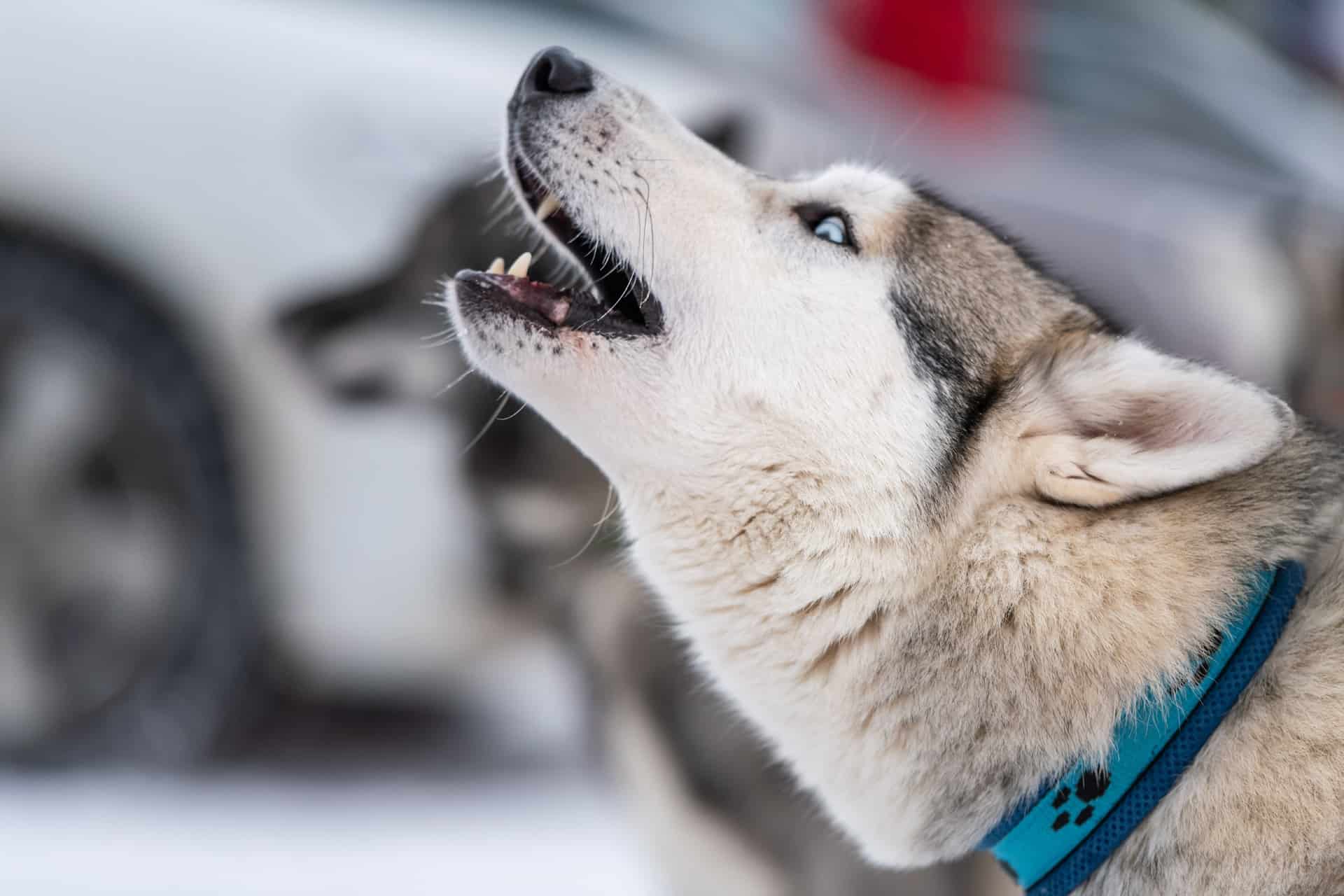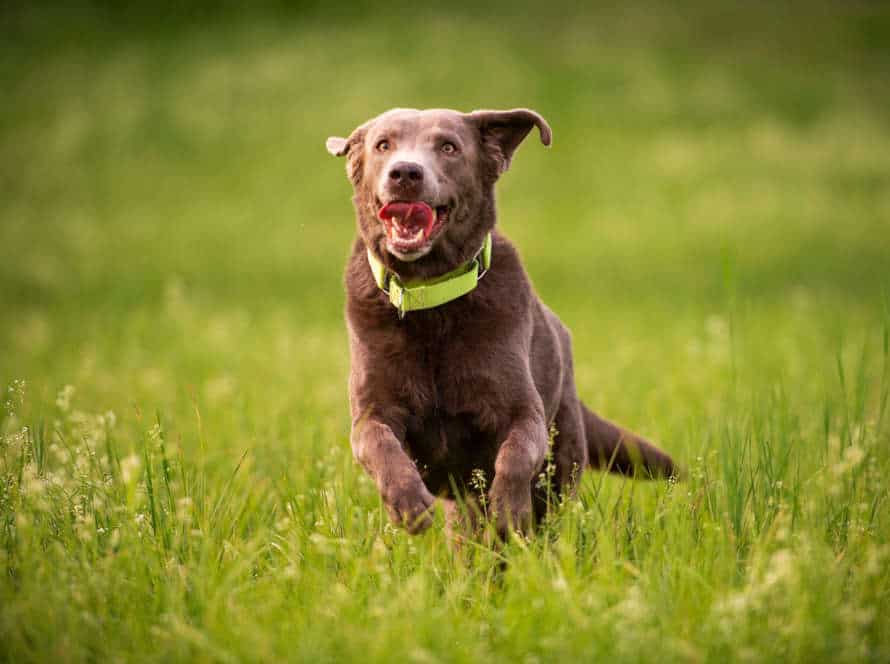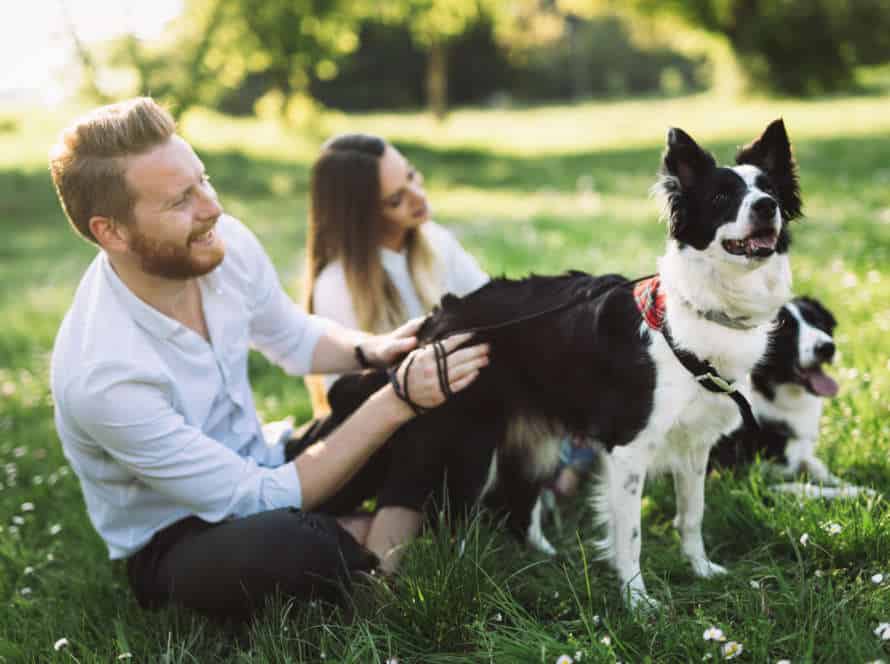Fear Barking: How Anxiety Can Trigger Vocalization
Fear barking is a behavior issue in dogs that can be caused by situations or stimuli that make them anxious. Dogs may bark out of fear when they come across new people, animals, or places. Or, if they are separated from their owners.
To manage fear barking in dogs, here are some tips:
- Identify what triggers your dog to bark from fear.
- Introduce your dog slowly and in controlled settings to new people, animals, and places.
- Expose your pup to the trigger stimuli in a positive and non-threatening way.
- Avoid punishing or scolding them for fear barking. This will only worsen their anxiety and increase their barking.
- Get professional help if the issue persists. Such as a certified dog trainer or veterinary behaviorist.
Remember that patience, understanding, and positive reinforcement are the keys to managing fear barking and helping your dog feel safe.
What is Fear Barking?
Fear barking is a behavior that can happen when a canine is anxious or threatened. It can be in reply to loud sounds, new people, or changes in the environment. It may also be due to separation anxiety or other medical issues. So, let’s explore the causes of this fear barking and how to tackle it!
Defining Fear Barking
Fear barking is a common behavior in dogs. It happens when they feel anxious or afraid due to external triggers such as loud sounds, new places, strange people or animals and loneliness.
When a pup senses a risk, it may bark excessively as a form of protection or to warn its owner of the danger. Fear barking can turn into a habit if the reason for fear isn’t discovered or treated. It can also cause other bad behaviors like aggression, destruction or too much pacing.
Identifying the different types of barks and the reasons behind them can help owners control fear barking.
Pro tip: To make your doggy overcome fear barking, take advice from an experienced trainer or vet who can make a personalized plan to suit your pup’s particular needs.
Explaining why Fear Barking happens
Fear barking is a vocalization dogs make when anxious, scared, or stressed. Dogs may bark excessively, growl, or do other aggressive things to protect themselves.
This type of barking often happens with dogs that have experienced trauma or mistreatment. It can also occur when a dog sees a stranger, hears loud noises, or is in a new environment.
To help your pup feel better, gradually expose them to new situations and stimuli in a safe space. With patience, time, and love, your furry friend can feel secure. Consider getting help from a professional dog trainer or behaviorist too.
Remember, a dog’s barking is a form of communication. By understanding the triggers behind the fear barking, you can create a positive atmosphere for your pup.
When Fear Barking becomes a problem
Fear barking is vocalizing when a dog feels threatened or anxious. Excessive fear barking can be a problem for the dog and their humans.
What causes it? Loud noises, strangers, unfamiliar places, and other animals can trigger it.
It’s important to take care of fear barking ASAP. Here are some tips:
- Identify the trigger and remove it if you can.
- Set up a safe and comfortable environment for your pup.
- Use positive reinforcement training to promote calm behavior.
- Get help from a certified dog trainer or behaviorist.
- Be patient and consistent in your approach – resolving fear barking takes time.
Understanding Canine Anxiety
Fear barking is a symptom of canine anxiety. It usually occurs in stressful situations, like when a dog’s left alone or feels threatened by other animals or people. It’s important to identify these signs of anxiety in your pup so that you can help them.
In this article, we will look at the causes and symptoms of canine anxiety and how it relates to fear barking.
Causes of Anxiety in Dogs
Several potential causes of canine anxiety exist. These can lead to fear barking and other vocalizations. Examples include loud noises, separation from owners, changes to routine and past trauma.
Signs of anxiety may include restlessness, panting, trembling, pacing and destructive behaviour. To treat this, it is important to identify the root cause. Solutions include behavioural training, desensitization, medications and natural remedies e.g. aromatherapy and herbal supplements. Veterinary advice should be sought to decide the best plan.
A Pro Tip: Exercise, socialisation and positive reinforcement can help prevent anxiety and boost wellbeing.
Symptoms of Anxiety in Dogs
It can be tough to tell if your pup’s stressed – since dogs don’t speak out their emotions. Here are the main signs of anxiety in dogs:
- Heaving breaths and pacing.
- Too much yapping or whining.
- Can’t settle down.
- Tremors and quivering.
- Doing damage to stuff.
- Loss of appetite.
- Aggression to other animals or people.
Fear barking is a typical sign of anxiety in dogs. Usually, it’s joined by other physical clues such as rigid body posture, stiff fur, and wide eyes. Knowing what’s causing your pup’s anxiety can help you tackle the issue and stop fear barking.
Pro Tip: Talk to a vet or animal therapist if you think your dog’s anxious.
Types of Anxiety in Dogs
Anxiety in dogs can appear in different forms. Recognizing them can aid you in comprehending and managing your dog’s behaviour. Fear barking is a result of anxiety and can be caused by diverse stimuli like strange people, loud noises, or other dogs. Here are the common types of anxiety in pooches:
- Generalized Anxiety: It’s characterised by excessive and unrealistic worries about everyday activities, leading to trembling, restlessness, and digestive issues.
- Separation Anxiety: Dogs with this type of anxiety experience great stress and panic when left alone, causing destructive behaviour, loud barking, and even self-harm.
- Social Anxiety: Social anxiety in dogs results in fear and stress when they are around unfamiliar people or other pooches.
- Noise Anxiety: Dogs with noise anxiety become anxious and scared when they hear loud or sudden noises like storms or fireworks.
Identifying the type of anxiety your furry friend is facing can help you design an individualised approach to regulate their behaviour and lessen their stress. Pro Tip: Get the help of a professional dog trainer or behaviourist to make a personalised training plan for your pup.
Signs of Fear Barking
Fear barking is frequent in dogs in anxious or scared times. They may bark too much when they come upon a tense situation, like when a stranger appears in the house. It’s wise to recognize the signs of fear barking. This way, you can help your pup and decrease their stress. In this article, we will investigate the signs of fear barking and how to help your pup during anxious situations.
How to Identify Fear Barking
It can be tricky to identify fear barking in dogs. However, there are certain signs that can assist you in figuring it out. Look out for:
- Raised hackles – If a pup is scared, its fur will rise on its shoulders and back.
- Cowering – A frightened dog may crouch down and tuck its tail.
- Avoidance – If your dog attempts to keep away from certain people or situations, it could mean it’s scared.
- Aggression – Fearful dogs may become aggressive and try to bite people or other animals as a defence.
To help manage fear barking, it’s key to tackle the anxiety trigger. Do this by providing a safe atmosphere, using positive reinforcement strategies, or by seeking help from a professional dog trainer or behaviourist.
Pro tip: Remember that fear barking implies your pup is distressed. Respond with understanding rather than punishment or aggression.
Differentiating Fear Barking from other kinds of Barking
Dogs bark for different reasons. It can be hard to know the difference between fear barking and other kinds. Fear barking happens when a pup is scared, anxious, or threatened. It’s a natural reaction to protect themselves. Here are some signs of fear barking:
- Hackles raised
- Fast heartbeat
- Panting/drooling
- Tail between legs
- Hiding/cowering
- Pacing/restlessness
- Growling/snarling
Pro Tip: To reduce fear barking in your pup, find and remove potential triggers, or get help from a pro dog behaviorist.
Identifying the Triggers of Fear Barking
Fear barking is a type of vocalization that dogs use when they are scared, threatened, or anxious. To handle this behavior properly, it’s important to recognize its triggers.
Signs of fear barking include:
- High pitched vocalizations
- Shaking or trembling
- Raised fur on back and neck
- Not making eye contact
- Tail tucked between legs
Fear barking can be caused by various stimuli, such as loud noises, unfamiliar animals/people, and changes in the environment. By observing your dog’s behavior and recognizing what triggers their fear barking, you can help them feel more comfortable.
Pro Tip: If you think your dog has fear barking, work with a certified dog trainer or behaviorist to deal with it safely and effectively.
Treating Fear Barking
Fear barking is a frequent doggy thing. It’s caused by unease and stress. It’s hard to treat, but you can reduce it! Here are some ideas to help your pup with fear barking. These are the most successful methods:
- Desensitization – exposing your dog to the source of fear in a controlled and safe manner.
- Counter-conditioning – replacing the fearful response with a positive one through training and rewards.
- Medications – prescribed by the vet to help reduce anxiety and stress in dogs.
- Behavioral therapy – working with a professional to identify the root cause of the fear and develop a personalized treatment plan.
Training Techniques for Fear Barking
Strategies to help your pooch overcome fear-barking can be utilized. Here are some tips to get going:
- Desensitization: Progressively expose your canine to triggers of fear barking, e.g. loud sounds or strange people, in a protected and controlled setting until he becomes used to them.
- Counter-conditioning: Employ positive reinforcement tactics such as treats, toys, or praise to help your pup relate fear-prompting stimuli to a positive experience.
- Distraction: Involve your dog in an activity like playing or training to shift his focus from the fear-causing stimulus.
- Expert Advice: If the fear barking persists and impairs your dog’s life, think about consulting a professional dog trainer or animal behaviorist. They can evaluate your dog’s behavior and advise tailored training plans to manage fear barking.
Medicinal Intervention for Fear Barking
Fear barking in dogs can be due to anxiety, loud noises, or something new. If your pup barks when scared, your vet may suggest medication.
Anti-anxiety meds such as tricyclic antidepressants, benzodiazepines, and SSRIs can help reduce fear barking.
Sedatives like diazepam and alprazolam can also help calm your dog and lessen fear barking.
Pheromone therapy with Adaptil or Feliway can also be used to soothe dogs and reduce fear barking.
It’s important to remember that medication needs to be used along with training and behavior modification. A certified dog behaviorist can help you create a plan to fix the reason for your dog’s fear barking.
Combination therapies for Fear Barking
Fear barking can be treated with a combo of therapies. These address the underlying anxiousness causing the vocalizations. Consider these therapies:
- Counterconditioning and desensitization: Exposed your pet to minimal triggers. Give them positive reinforcement when they stay calm.
- Medication: In addition to therapy, your vet may prescribe drugs to manage their anxiety and lower fear barking.
- Environmental changes: Alter your pet’s living environment. Provide calming tools like white noise machines and a “safe spot” to reduce anxiety.
Every pet is different. Don’t be scared to try different therapies and modifications to find what works best.
Prevention of Fear Barking
Fear barking is a problem that affects many dogs. This is a noise they make when frightened or nervous, due to a shock, fear of unfamiliar people or noises, or any other stress. Fortunately, there are steps to help your pet manage their fear and stop their barking. Below, we’ll cover how to properly prevent fear barking.
Early socialization and exposure
Socialization and exposure early are essential to stop fear barking in dogs. Fear barking is caused by worry, and socializing early is key to stop anxiety and fear barking.
Here are some tips:
- Begin socializing pup 3-14 weeks old.
- Introduce pup to people, animals, objects and places slowly.
- Use positive reinforcement to encourage good behaviour and reduce anxiety.
- Be consistent and patient with training; it takes time for pups to be confident.
- Don’t put pup in scary or overwhelming situations; this will raise anxiety and lead to fear barking.
With the right socializing and training, your pup will grow up well-rounded and without fear barking.
Reducing Stress and anxiety in Dogs
Anxiety and stress? That’s why dogs fear bark. To prevent this, you should know how these two can trigger barking. Here are some tips:
- Exercise: An active pup is a content pup. Exercise helps them get rid of too much energy, reduce stress, and lower anxiety.
- Mental stimulation: Give your dog puzzles, toys, and games that work their brain. This helps reduce anxiety and stops boredom.
- Crate training: Crates give dogs a sense of safety and comfort. Good crate training stops fear barking.
- Body language: Learn how to read your pup’s body language. This helps you intervene before fear barking begins.
- Talk to your vet: Doctor visits are sometimes necessary. Medication can treat anxiety and stop fear barking.
By doing these, you can prevent fear barking and make your pet’s life happier and healthier.
Consistency and positive reinforcement
Consistency + positive reinforcement: keys to stopping fear barking in dogs caused by anxiety.
Go about it this way:
- Consistency: Set up a daily routine for your dog. Have regular times for eating, playing, and walking. Predictability helps reduce anxiety + makes life orderly.
- Positive reinforcement: Give treats, verbal praise, and physical touch when your dog resists barking. Never scold or punish for barking. It’ll just make anxiety worse. Figure out the root cause of the barking + address it through patience and consistent positive reinforcement.
Frequently Asked Questions
Q: What is fear barking?
A: Fear barking is when a dog barks excessively due to fear or anxiety. It can be triggered by a variety of factors such as loud noises, unfamiliar people or animals, and separation anxiety.
Q: How can anxiety trigger vocalization in dogs?
A: Anxiety can cause a dog to feel stressed and anxious, which can lead to excessive vocalization as a way of expressing their fear or discomfort.
Q: How can I help my dog to stop fear barking?
A: It is important to identify the root cause of your dog’s fear barking in order to address it properly. This may involve desensitization training, providing a safe and comfortable environment, and seeking the help of a professional dog trainer or behaviorist.
Q: Can anxiety medication be helpful in reducing fear barking?
A: In some cases, medication may be recommended by a veterinarian to help reduce anxiety and fear in dogs. However, it should be used in conjunction with behavior modification and training techniques.
Q: Can fear barking be a sign of aggression?
A: Fear barking is not necessarily a sign of aggression, but it can escalate to more aggressive behavior if not addressed properly.
Q: How can I prevent fear barking in my dog?
A: Prevention can involve socializing your dog from a young age, introducing them to a variety of experiences and stimuli, providing plenty of exercise and mental stimulation, and addressing any potential issues or triggers as soon as possible.







